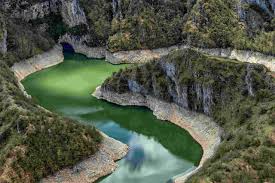What are the 8 most commonly asked questions about a Serbia tour?
- What are the most popular tourist attractions in Serbia?
- What is the best time of year to visit Serbia?
- How much does it cost to travel in Serbia?
- Are there any safety concerns when traveling in Serbia?
- What kind of food can I expect to find in Serbia?
- Are there any interesting cultural events or festivals I should know about before visiting Serbia?
- What language is spoken in Serbia and how easy is it for English speakers to communicate with locals?
- Is there reliable public transportation available throughout the country or do I need a car rental for my trip to Serbia?
What are the most popular tourist attractions in Serbia?
- Belgrade Fortress
- Kalemegdan Park
- Studenica Monastery
- Stari Ras and Sopocani Monastery
- Sargan Eight Railway
- Kopaonik National Park
- Oplenac Mausoleum
- Djavolja Varos
- Gamzigrad-Romuliana
- Zlatibor Mountain
What is the best time of year to visit Serbia?
The best time to visit Serbia is between April and October. During this period, temperatures are mild and the weather is usually sunny. The summer months (June to August) are the warmest and most popular time for tourists to visit, but can also be quite crowded.
How much does it cost to travel in Serbia?
The cost of travel in Serbia depends on your travel style and the type of accommodation you choose. Generally, budget travelers can expect to spend around $20-25 USD per day for basic accommodation, food, and transportation. If you opt for mid-range accommodation and activities such as sightseeing tours, you can expect to spend around $50-70 USD per day.
Are there any safety concerns when traveling in Serbia?
Yes, there are safety concerns when traveling in Serbia. As with any destination, travelers should remain vigilant and aware of their surroundings. Petty crime such as pickpocketing and bag snatching is common in crowded areas, so visitors should take extra precautions to protect their belongings. Additionally, visitors should be aware of the political situation in Serbia and avoid any demonstrations or political gatherings.
What kind of food can I expect to find in Serbia?
In Serbia, you can expect to find a variety of traditional Balkan dishes such as ćevapi (grilled minced meat sausages), pljeskavica (a large burger patty made from beef and pork), sarma (stuffed cabbage rolls with minced meat and rice), gibanica (a layered pastry filled with cheese and spinach), kajmak (a creamy dairy product similar to clotted cream), and ajvar (a red pepper relish). There are also many international cuisines available in Serbia, including Italian, Chinese, Turkish, Greek, and Mexican.
Are there any interesting cultural events or festivals I should know about before visiting Serbia?
Yes! Serbia has many interesting cultural events and festivals throughout the year. Some of the most popular include:
1. Guca Trumpet Festival – A celebration of traditional music and culture, held in the small village of Guca in August.
2. Belgrade Beer Fest – An annual beer festival held in August, offering a variety of local and international beers.
3. Nisville Jazz Festival – An annual jazz festival held in the city of Nis in July, featuring international and local jazz artists.
4. EXIT Festival – One of Europe’s largest music festivals, held at the Petrovaradin Fortress in Novi Sad every July.
5. Bemus Jazz Festival – An annual jazz festival held at the Danube River in Belgrade every June.
What language is spoken in Serbia and how easy is it for English speakers to communicate with locals?
The official language of Serbia is Serbian, which is a South Slavic language. It can be difficult for English speakers to communicate with locals, as most people in Serbia do not speak English. However, many people in larger cities, especially those who work in the tourism industry, do speak English.
Is there reliable public transportation available throughout the country or do I need a car rental for my trip to Serbia?
Public transportation is available throughout Serbia, however, it may not be as reliable as in other countries. Buses, trams and trains are available in major cities such as Belgrade, Novi Sad and Nis. However, the network may not cover the entire country and some areas may only be accessible by car. Car rental is recommended for those who plan to explore more remote areas of Serbia.

